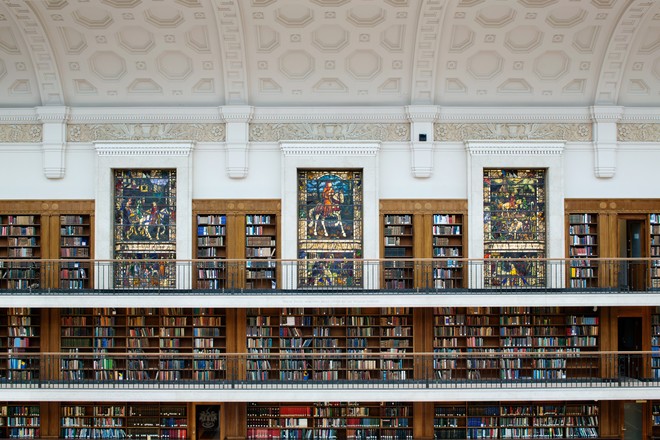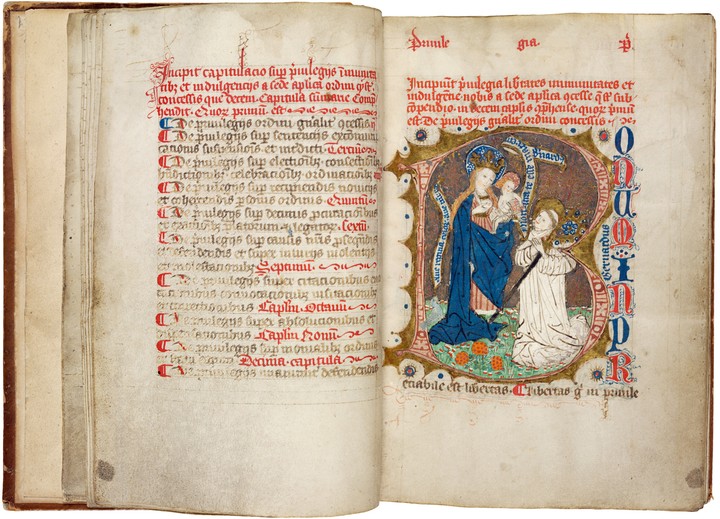Chaucer windows
1941
Made by Frank G. O'Brien Pty Ltd.
Presented by Sir William Dixson
The three stained-glass windows on the Southern wall commemorate the Canterbury Tales by Geoffrey Chaucer, the first great poet to write in English. The Canterbury Tales, his best-known work, tells a collection of stories by a group of pilgrims travelling from London to the Shrine of St Thomas à Becket at Canterbury Cathedral in the late 1300s.
The centre window shows Chaucer on horseback ready to ride with the Canterbury pilgrims. The left window shows the group leaving the Tabard Inn in Southwark, London. In the window on the right, the travellers are approaching Canterbury Cathedral. The lower panels illustrate the murder of Thomas Becket, to whose shrine the pilgrimage was made. Henry II’s court is represented on the left, and the martyrdom in the cathedral on the middle panel. On the right, Henry II is seen doing penance by the shrine of the murdered priest. The central band reproduces the first two lines of the Prologue to the Canterbury Tales:
‘Whan that Aprill with his shoures soote
The droghte of March hath perced to the roote’
(When in April the sweet showers fall
And pierce the drought of March to the root)
Murder most foul
Chaucer based his Canterbury Tales on the murder of Thomas Becket in 1170, who had been appointed to the position of Archbishop of Canterbury by his close friend King Henry II. The two however soon fell out. Following an incident in 1170 Henry, famous for his wild temper, is said to have shouted out, ‘Will no-one rid me of this troublesome priest?’ Hearing the remark, several knights rode to Canterbury and murdered the archbishop in his cathedral.
Asking the Pope’s forgiveness, Henry walked barefoot to Canterbury to pray at the spot where Becket was killed and the cathedral quickly became a place of pilgrimage. Believing they would be cured of illness, pilgrims often left valuables at the site. When Henry VIII closed down the churches and monasteries in the mid 1500s, it reportedly took 21 carts to remove the valuables from Becket’s shrine.
A rich craft
The design of
the Chaucer windows echoes the style of an illuminated manuscript. This highly
decorative and intricate artform originated in Western culture between 400 to
600AD and was used to embellish text with elaborate initials, borders and small
illustrations.
The process of illuminating
manuscripts was time consuming and very costly, as their richly detailed
designs were often ornamented with gold and silver. As a result, it was
reserved for manuscripts and documents commissioned by the church or wealthy
patrons until the middle ages. By 14th century the advances in technology
resulted in more economical production processes, and increased the demand of
illuminated manuscript in both secular and religious circles.



 Back to list
Back to list